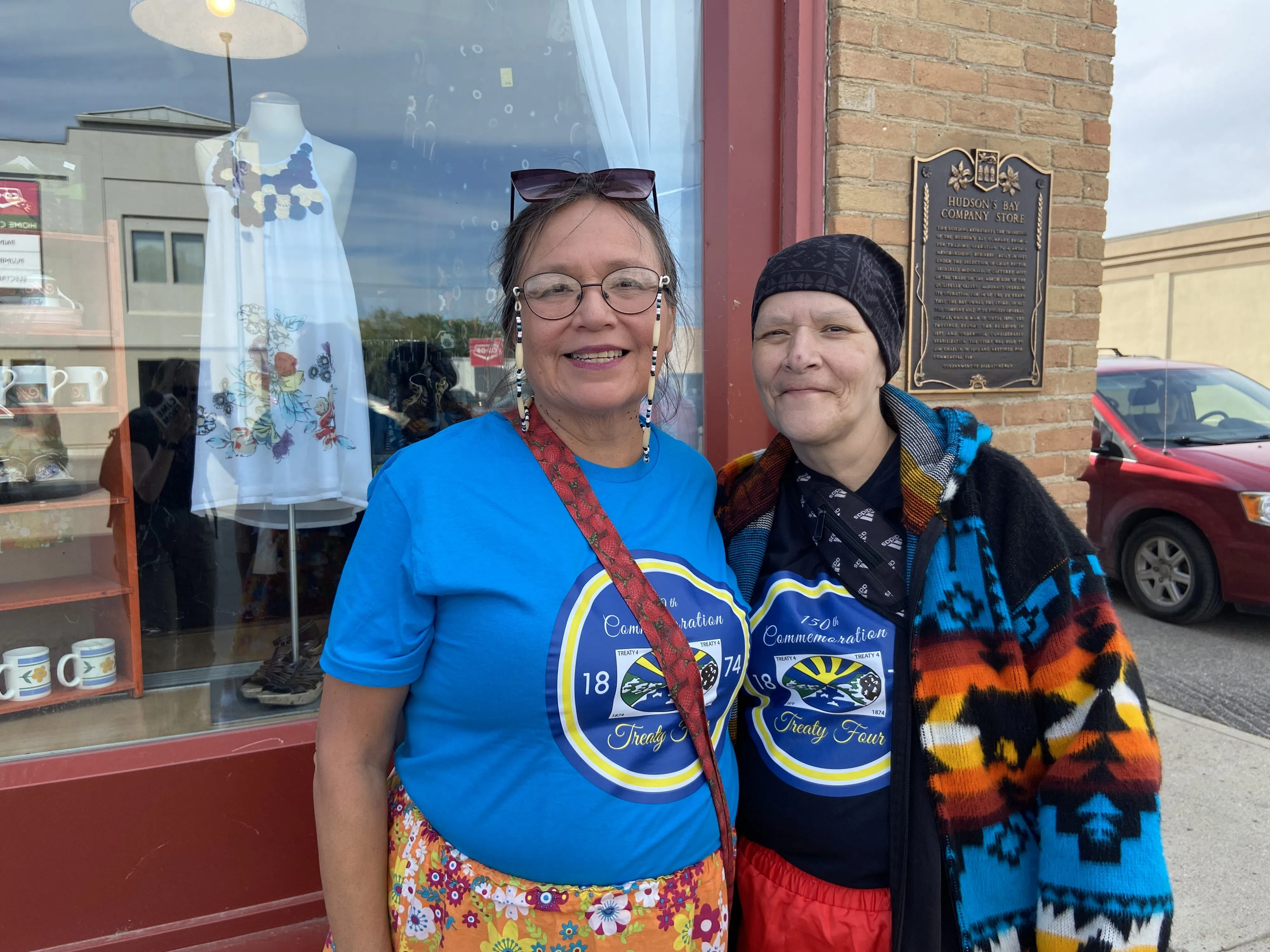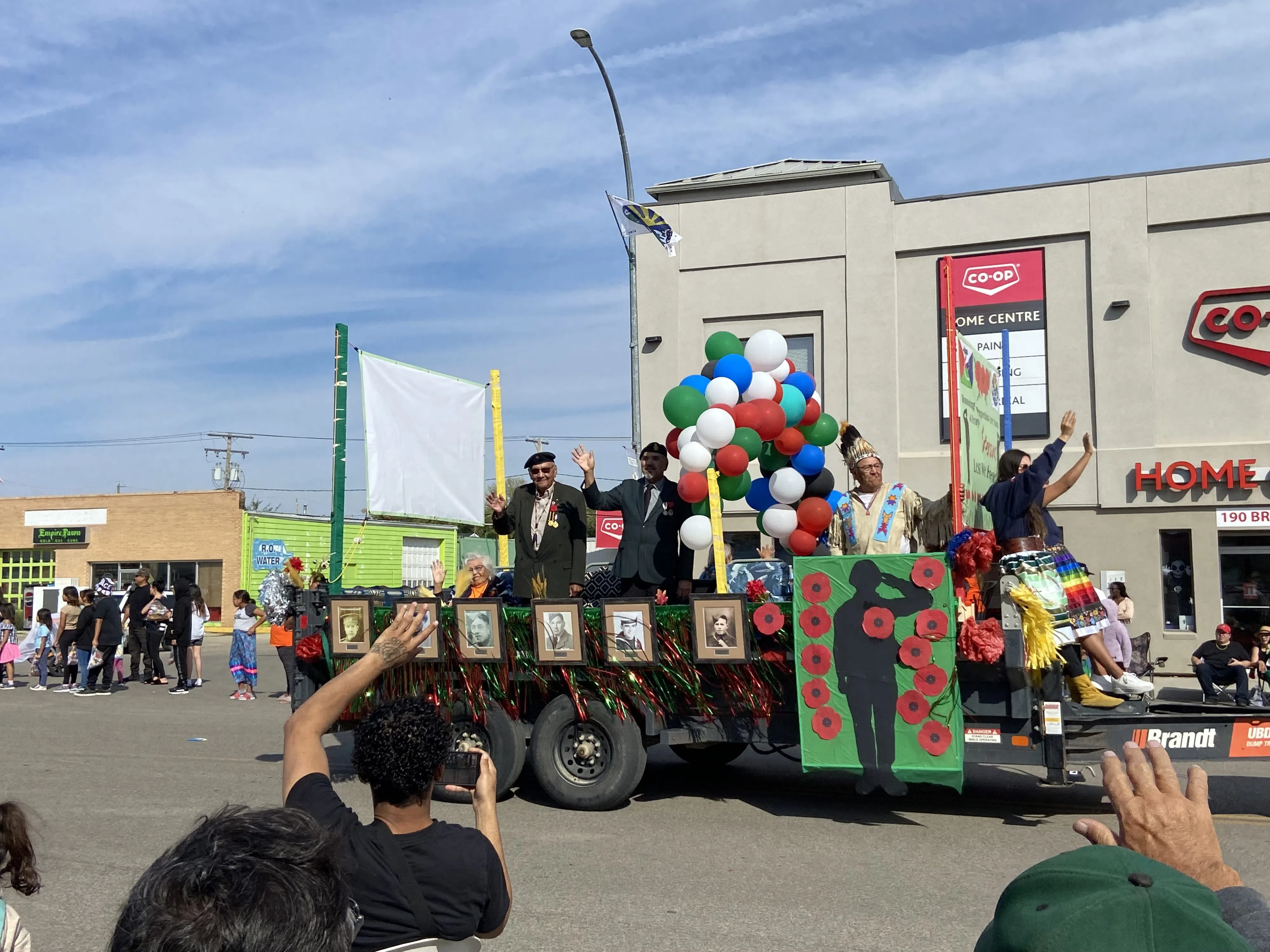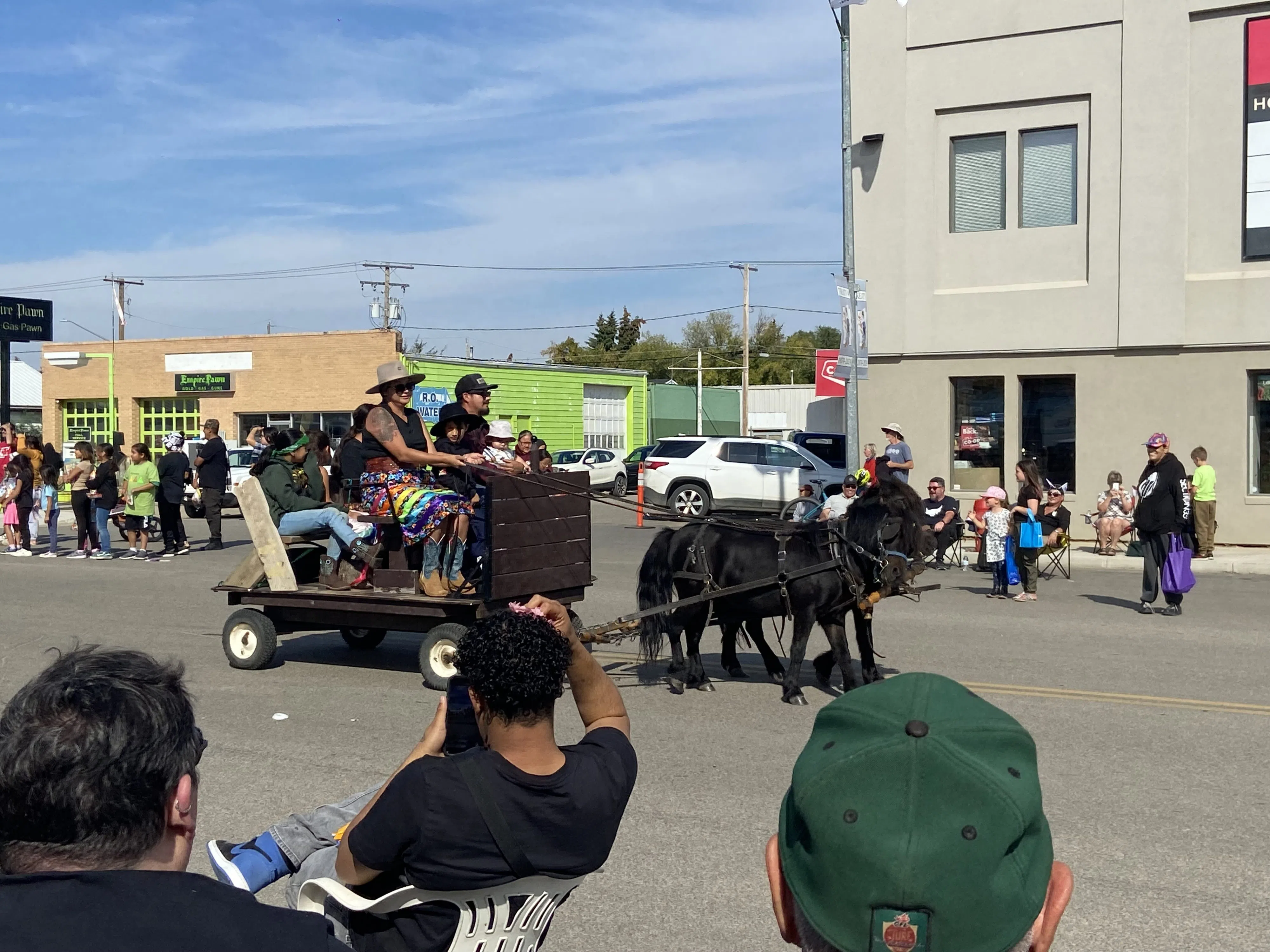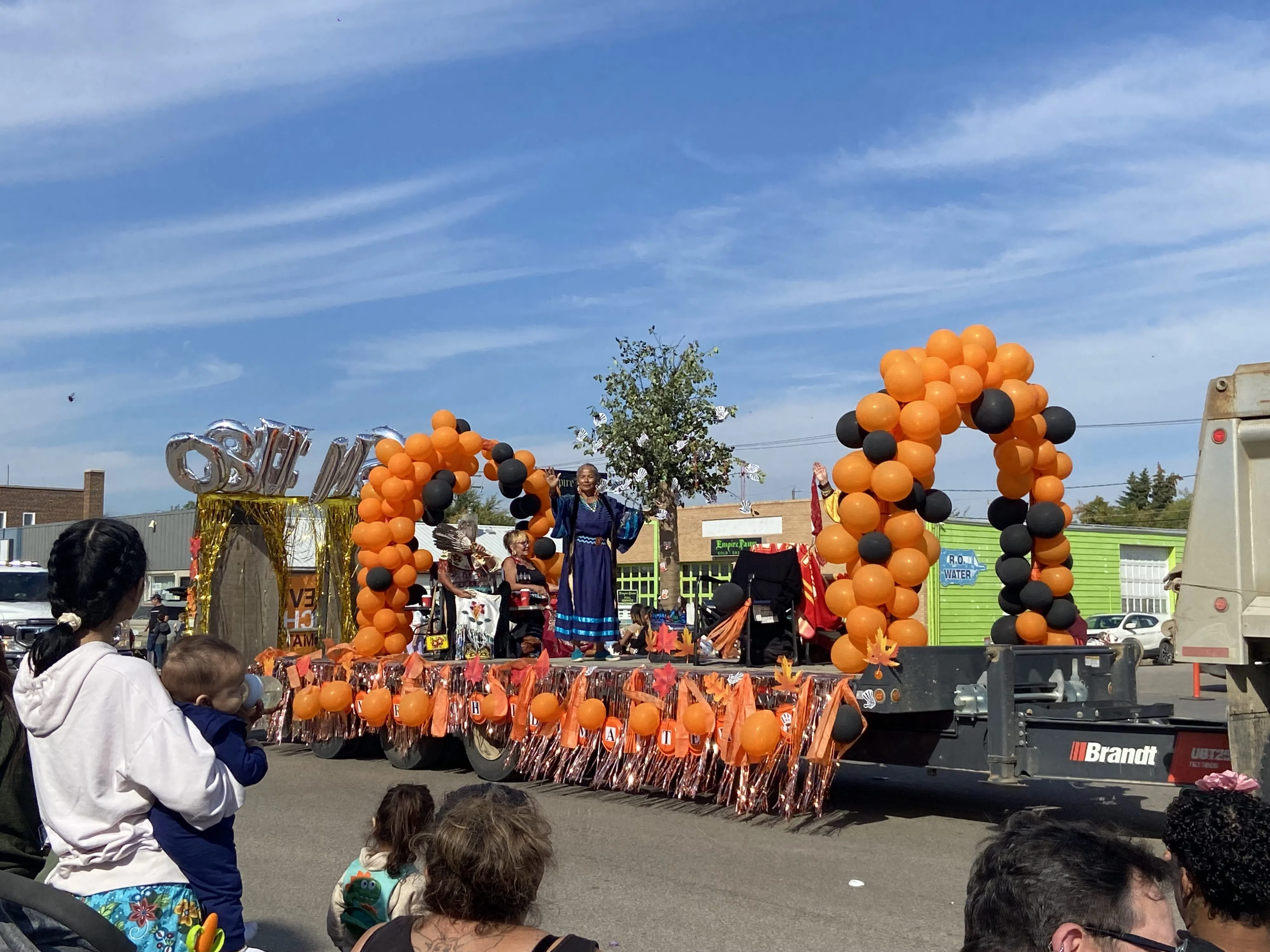Anyone from any culture is encouraged to participate in events to commemorate the 150th anniversary of the signing of Treaty 4 between Indigenous peoples and the Crown.
In September 1874, Canada signed Treaty 4 with various Saulteaux, Cree and other First Nations in Fort Qu’Appelle.
Fort Qu’Appelle has a week-long event to remember the historic moment for the people of Turtle Island, now known as Canada.
For Raul Sabato and his family, it’s all about celebrating Indigenous people and their culture.
“We celebrate all the nations today here,” he said. “We celebrate the brotherhood between Indigenous people here with my brother Jason from Pasqua First Nation 79 and me as a Hispanic living in Canada from the Dominican Republic.”
Sabato and hundreds of other spectators participated in the parade on Saturday morning. He’s happy to see such a big turnout.
“That’s a recognition of the value of not only the culture but of the peoples that own the land where we are living on today,” Sabato said.
“We’re standing on Indigenous land all across Canada. And to me, it’s a celebration of life.”
The 150th Treaty 4 anniversary parade is underway! @CJMENews pic.twitter.com/vCHyoulxjj
— Nicole Garn (@garnnic) September 14, 2024
In the future, he hopes to see more Indigenous people in positions of power.
“They’ll help direct a better way to the destiny of all the towns, cities and even the country,” Sabato said.
“We need to learn more about the people that know how to live with the land and from the land without hurting the land, and those are the First Nations.”

Cheyenne Akapew (centre) and Jennifer Mcnabb (right) sit with their family ahead of the parade in Fort Qu’Appelle. (Nicole Garn/980 CJME)
For Cheyenne Akapew and her family, they were excited to enjoy the parade.
Akapew said her kids couldn’t wait to see all the floats and get some candy.
She was happy to see so many people celebrating Indigenous culture.
“To me I believe that it shows that we’re still here as Indigenous people and how resilient we are,” she said.
Donna Standingready was happy to see so many children and youth take part in the many educational events throughout the week.
“Going forward, we’re going to have generations of better understanding of each other’s cultures,” she said. “For so many years, it was so buried or taught through the white man’s eyes and not through our own.”
She said everyone can benefit from learning more about Indigenous culture and history.
Standingready has special ties to the treaty signing.
“I’m a descendant of one of the treaty signers — my mother’s great, great, great grandfather. I don’t know how many greats to put in front of there,” she said with a laugh.
She said the signing of the treaty wasn’t a perfect negotiation, and a lot of work still needs to be done.
“We’re all treaty people,” she said. “We’re here to work our way through it together.”
In the next 150 years she hopes that Indigenous people will be seen as equals.

Donna Standingready (left) is a descendant of one of the Indigenous leaders who signed the Treaty 4 agreement back in 1874. (Nicole Garn/980 CJME)
Still work that needs to be done
Zagime Anishinabek Chief Lynn Acoose agrees that there’s plenty of work that still needs to be done.
She said there are a number of outstanding issues around treaty implementation and more specifically around the spirit and intent of treaty — meaning the treaty is to be broadly interpreted and brought forward to meet the needs of people today.
The treaty allowed the Crown to use and occupy 195,000 square kilometres of land in what’s now southeastern Alberta, southern Saskatchewan and west-central Manitoba.
In exchange, the federal government was to set aside land for reserves and pay $750 per year in powder, shot and twine. It was also to provide a school, various tools and supplies.
And it was to pay an annuity of $5 per year to each man, woman and child.
“I would like to see the annuities, the $5 that we receive every year be brought up to current standards,” she said.
“The taking up of resources without resource revenue sharing needs to be addressed. The issue of our right to pursue our traditional livelihood under hunting, trapping and fishing needs to be addressed as well, because there seems to be, every year, more barriers to be able to pick medicine, pick berries, or go hunting.”

Zagime Anishinabek Chief Lynn Acoose. (Lynn Acoose/Submitted)
Treaty 4 was signed on Sept. 15, 1874. Every Sept. 15, a representative of the Crown meets with leaders to discuss the promises of the treaty.
“Hopefully, from this honoring of our treaty, we can move forward on real discussion about how we can make our treaty relationship more equitable,” she said.
“We want to have a discussion with the Crown on what happens in our territories in terms of resource development. For instance, the water diversion from Lake Diefenbaker and things like that. And so we believe that we have a stake in the future just as much as Saskatchewan and Canada do.”
Acoose said there were a handful of events people participated in all week, including educational activities for children and forums for people to come together and talk about treaty implementation.
She doesn’t have official numbers from the event but said there was an increase in participation throughout the week.
“I think we probably broke records last week and today at the powwow.”
She hopes that people will continue to learn about the treaty and it’s historical significance.
Everyone is having a blast out here in Fort Qu’Appelle! @CJMENews pic.twitter.com/ubMVRrehtc
— Nicole Garn (@garnnic) September 14, 2024
The Wa Wa Drill Corps are always a highlight. @CJMENews pic.twitter.com/8aEWPYd0Aq
— Nicole Garn (@garnnic) September 14, 2024
Read more














